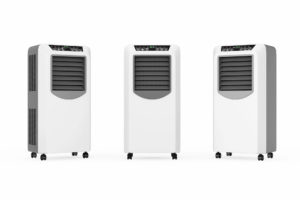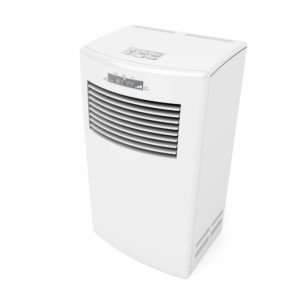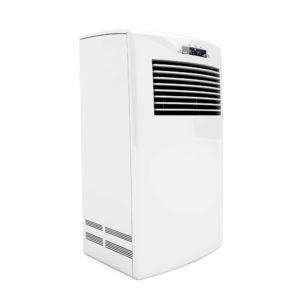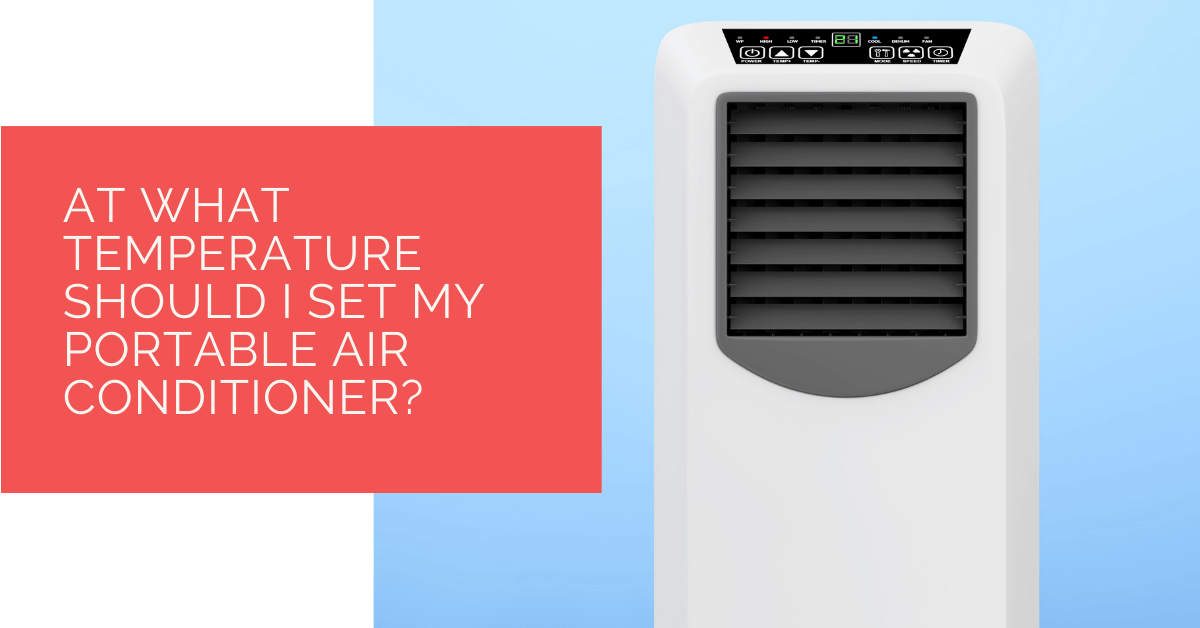When it comes to portable air conditioners, one of the most common questions people ask is what temperature should they set it at? The answer to this question depends on a variety of factors, including the size of your room and the type of air conditioner you have. In this article, we will explore some key things to keep in mind when setting the temperature on your portable air conditioner. We hope this information helps you achieve optimum cooling comfort in your home!
Contents
- 1 Key Takeaways
- 2 What is a portable AC unit?
- 3 The portable units are quite easy to transport
- 4 How do they work?
- 5 Portable air conditioners are divided into two categories:
- 6 Where does the heat from the portable AC go?
- 7 Setting up the air conditioner to work
- 8 Pros of this device
- 9 Temperature – The what’s and why’s
- 10 What is the best location for a portable air conditioner?
- 11 Heat Pump Source: Reliable Heating and Cooling Solutions
- 12 In conclusion
Key Takeaways
- Portable air conditioners are designed for temporary and adaptable cooling solutions, making them ideal for small spaces or people on the move.
- Setting the temperature on a portable AC should aim for comfort within the range of 21 to 35 degrees Celsius to optimize energy efficiency and reduce costs.
- The location of a portable air conditioner, proper venting, and consideration of noise levels are essential when using these units effectively.
What is a portable AC unit?
The purpose of using a portable air conditioning unit is to provide a temporary and adaptable cooling solution, especially during the summer months. A portable ac is designed for convenient placement within a room and requires little installation beyond an electrical power supply (usually a plug-in) and the routing and venting of the extracted hot exhaust air.
The portable units are quite easy to transport
The majority of AC’s are fixed and cannot be moved without disassembling. But the portable units have a compact footprint — the length, width, and height are usually all less than a metre.
The caster wheels that are attached make it easy to move around. The portable ac units are the ideal cooling unit during the summer season for individuals who cannot purchase a permanent AC due to limited available space in the house or a lack of permission to install one.
For people or families on the move, using portable ac units is the best solution to achieve the best temp anywhere and at any time.
After the transfer, the AC’s can be turned on immediately or within a few days. The capacity to transport it requires less capital investment. One unit can be reused as many times as needed.
The hose connectors are a one-time fix that some people may handle themselves, while others may need expert assistance. The portable air conditioners can be placed in one corner of a small apartment and provide the perfect temperature to stay cool.
How do they work?
 A portable air conditioning system is programmable to give an ideal temperature 24 hours a day, seven days a week. They may have an integrated condensing coil (heat exchanger) and collect moisture from the air in a tray or removable cartridge that must be emptied when full. An alarm indication is usually used to notify this.
A portable air conditioning system is programmable to give an ideal temperature 24 hours a day, seven days a week. They may have an integrated condensing coil (heat exchanger) and collect moisture from the air in a tray or removable cartridge that must be emptied when full. An alarm indication is usually used to notify this.
Portable air conditioners are divided into two categories:
Monoblock: These are the most common type of portable AC unit, and they come with a flexible duct hose with a diameter of roughly 100-125mm and a length of up to 2-3m as standard.
Some models can extend the exhaust hose to transport warm air from the computer room to the outside of the building or into a ceiling void if the room has a suspended ceiling and sufficient roof space. The highest seal and cooling efficiency comes from a permanent external wall vent.
Split: They are comparable to permanently installed AC systems but with a portable internal unit connected to a heat exchanger or fixed external condenser through a flexible umbilical or hose.
Where does the heat from the portable AC go?
A heat pump is what an air conditioner is. It extracts heat from a house and exhausts it into the atmosphere. An exhaust hose leading out is used to remove heat.
Since it is a detachable hose, it must be secured to the unit before using the AC. The tube’s other end is usually linked to a well-insulated window to prevent stray or warm air from entering the house and keep cool air circulating instead.
Setting up the air conditioner to work
Attachment for window units
Cooling loss occurs due to air leakage at the point where the exhaust duct is connected. It takes some work to install the window unit, especially if the measurements are enormous.
You’ll need a piece of insulating material, such as wood, and you’ll need to cut a hole in it. The opening should be large enough to accommodate the hose pipe’s diameter. You’re ready to go once you’ve got the attachment and the hose attached to the windows.
The window unit adds portability
Connect the hose to an outlet wherever you wish to use the device. You can purchase the hose mounting structure for each chamber where you intend to operate the AC separately. It becomes portable once the outlets are set.
An electrical outlet
 The weight of a portable AC can range from 0.75 to 1.5 tonnes. Both of these capabilities need a large amount of energy. There must be an electrical outlet where you will install the AC. The outlet should have a high current capacity and be within the wire’s reach.
The weight of a portable AC can range from 0.75 to 1.5 tonnes. Both of these capabilities need a large amount of energy. There must be an electrical outlet where you will install the AC. The outlet should have a high current capacity and be within the wire’s reach.
Using the Air Conditioning
After the air conditioner has been assembled, it can be turned on using the onboard panel or, if one is available, a remote controller. Air swing, temperature display, sleep, timed functions, and remote control are all standard features on most of these devices.
Water Tank
The portable air conditioners are distinguished by their water tank. The air conditioner removes both heat and moisture. The moisture condenses and collects in a water tank must be emptied while the heat is released to the atmosphere via the hose.
The amount of water collected in the tank is determined by the humidity and the number of hours the machine has been running. The frequency with which you must empty the water tank is determined by these two criteria, as well as the capacity of the tank.
An audio/visual alert indicates a full water tank. When you see that indicator, you should empty the tank as soon as possible. If the tank has overflow protection, the air conditioner may turn off briefly until the tank is empty.
Pros of this device
- Portable/Lightweight
- Installation is simple
- There’s no need to change the structure (drilling holes, cutting wooden fixtures, etc.)
- Those that move around a lot will appreciate it.
- It’s convenient for rented properties where structural improvements aren’t allowed.
- There is no need to refuel when moving
Temperature – The what’s and why’s
In the summer, 24 to 27 degrees Celsius and relative humidity of about 50% provide the best comfort. The comfortable temperature in the room should be between 21 and 35 degrees Celsius.
However, it is not recommended to set extreme temperatures that are substantially lower than the outside temperature, which is a warm temperature.
Setting your air conditioner to a temperature lower than 21°C in cooling mode is generally regarded as too cold, and attempting to cool a room to this desired temperature is generally a waste of electricity.
Similarly, attempting to heat a room to a temperature higher than 24°C is generally a waste of electricity; most people set their home thermostat to approximately 22°C, and you should set your air conditioner to similar temperatures.
 When you lower the temperature for cold air or cooler air within a short span of time, the AC compressor has to operate longer, which consumes more energy. If you raise the temperature by a few degrees, the compressor will work for a shorter period, resulting in lower power use.
When you lower the temperature for cold air or cooler air within a short span of time, the AC compressor has to operate longer, which consumes more energy. If you raise the temperature by a few degrees, the compressor will work for a shorter period, resulting in lower power use.
The compressor shuts off once the required temperature is attained, leaving only the AC fan to operate. When the thermostat detects a rise in temperature, the compressor restarts.
During the summer, electricity costs are a significant source of stress due to the constant usage of the air conditioner. While you won’t save money, you may significantly reduce your expenses by operating the air conditioner wisely by moderating the temperature as per the requirements of the hotter and colder months. The most crucial suggestion is to set the air conditioner to a higher but still comfortable setting.
PACs aren’t cheap; the most cost between £300 and £1,000. Evaporative air coolers are more common below this price point than genuine air conditioners, which are less effective.
According to different studies, raising the thermostat to 27 degrees Celsius will save you up to 30% on your energy bills. According to studies, every temperature increase resulted in a 6% reduction in energy bills.
When it comes to energy costs, a higher BTU rating means the portable ac will do more work and generate more energy bills, but not all units are made equal. Like your fridge or oven, your air conditioner should have an energy efficiency class ranging from A++ to G, or energy star rating. The more efficient the unit is, the higher the energy class or energy star.
Your cooling needs determine the amount you’ll need to spend. The amount of heat required to raise the temperature of one pound of water by one degree is measured in British thermal units (BTU).
A higher rating indicates that the air conditioner can cool a larger area, implying that the unit will be larger and more expensive. A 9,000BTU unit can heat up to 45 cubic metres of space, while a 12,000BTU unit can heat up to 90 cubic metres.
What is the best location for a portable air conditioner?
Most PACs must vent hot air through the windows, and if you can’t put it precisely next to one, you’ll either have to install a permanent vent in the wall or look for a type with a hose extension.
Furthermore, more warm air can enter as the air escapes, replacing the cold one circulating. The air conditioner’s negative air pressure actively encourages it to do so.
A window fastening kit is included with most PACs to close gaps, but it may only be suited for a sash window, sliding door, or hinged top window.
While you might be able to make do with hardboard or towels, it’s a good idea to double-check your alternatives for your chosen PAC before you get it home.
Your air conditioner has to get rid of more than just hot air to make it feel cool. Moisture condenses when the air stays cool, which is collected inside the PAC.
Some types may evaporate this internally and exhaust it through the hose or the rear of the unit, while others keep it in an internal reservoir that must be emptied manually.
Heat Pump Source: Reliable Heating and Cooling Solutions
At Heat Pump Source, we take pride in our unwavering commitment to serving the UK with top-tier HVAC solutions. From the efficiency of heat pumps and the cool relief of air conditioning to the warmth of boilers, radiators, and underfloor heating, our dedicated team is always at the forefront of innovation. We understand the unique needs of every household and business, and we strive to provide dependable health and cooling products and services that are tailored just for you. Ensuring your comfort and satisfaction is our utmost priority. Whether you have questions, need guidance, or require support, we’re always here to assist. Please don’t hesitate to contact us; we’re eager to be of service.
In conclusion
Because most of the specific model of portable ac has a compressor and one or more fans, they will never be completely silent. However, some are quieter than others; the manufacturer’s specification should indicate the lowest and/or maximum noise pressure levels.
Also, keep an eye out for sleep modes. To make the ac hum a little easier to sleep through, they turn off the compressor and lessen the speed of any fans.
If you’re having trouble sleeping because of the noise, consider cooling the room before going to bed or using a desktop or pedestal fan instead.
They use more power than window or wall-mounted air conditioners of the same capacity. Emptying the water tank may appear to be a time-consuming chore, but it requires very little time and effort.
About the Author
At Heat Pump Source, our articles are the product of a collaborative effort among a team of highly skilled HVAC experts. Our dedicated professionals, hailing from diverse backgrounds in heating, ventilation, air conditioning, and refrigeration, contribute their extensive knowledge and experience to every piece of content. This multidisciplinary approach ensures comprehensive coverage. Our commitment is to deliver authoritative, reliable, and tailored advice to meet the unique needs of every household and business across the UK.

